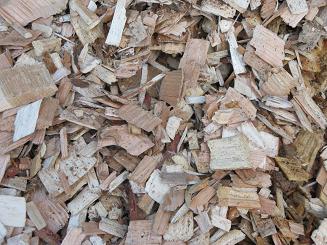by Diomy Zamora and Charlie Blinn
Years of fire suppression have left many US forestlands dangerously overstocked and at risk of intense wildfire. With the rapid expansion of the wildland-urban interface in some regions, the need for fire hazard reduction has become increasingly important. In the wildland-urban interface – an area where increased human influence and land-use conversion are changing natural resource goods, services, and management (Macie and Hermansen 2002) – homes are often located in or adjacent to heavily forested areas that can be prone to wildfire. Wildfires are expensive to fight, cause billions of dollars each year in damage, and can negatively affect wildlife habitat as well as air and water quality. Overstocked forests may also be more susceptible to insect infestation and disease once tree health begins to decline. Outbreaks of insects and diseases occur more frequently in areas where trees aren’t healthy and able to fight off the infestation. With an increasing number of plant stressors (e.g., climate change, invasive species), maintaining forest health is becoming increasingly important.
Benefits
The use of woody biomass for energy can improve forest health and reduce the risk of wildfires. Fuel hazard reduction involves the removal of small-diameter, low-quality woody material. If markets exist, it can be harvested for other uses. Markets are key components of the biomass value chain because they promote creation of healthier forests by encouraging the removal of brush, small diameter and damaged trees, and other fuel sources. This action lessens the possibility of large, high intensity wildfires as well as decreases mortality caused by insects and disease.
While about 8.4 billion dry tons of vegetation have been identified nationally for fuel hazard reduction treatment, only 60 million dry tons of fuel from treatment thinnings can actually be removed annually due to accessibility limitations, recovery limits, and the merchandizing of some of this wood for higher value products (Perlack et al, 2005). Approximately 80% of this material would be removed from private forestland and the remaining 20% from public forests. By creating new markets for wastewood and debris from thinning, using woody biomass may help public agencies and private landowners pay for management activities that can help reduce the risk of wildfire and increase forest health and resilience (see Forest Health Improvement Removals). Follow the links below to find out more about the environmental impacts of woody biomass utilization.
- Climate Change and Carbon Sequestration
- Air Quality and Human Health
- Water Quality and Quantity
- Biodiversity and Wildlife
- Wood Energy and Soil Productivity
- Wood Energy and Invasive Species
References
- Marcie EA, Hermanses LA. 2002. Human influences on forest ecosystems: The southern wildland-urban interface assessment. Asherville, North Carolina, US Department of Agriculture, Forest Service, Southern Research Station, General Technical Report SRS-55. 160 p.
- Perlack R, Wright L, Turhollow A, Graham R, Stokes B, Erbach D. 2005. Biomass as feedstock for a biomass and bioproducts industry: The technical feasibility of a billion-ton annual supply. Report DOE/GO-102005-2135. Washington, DC. 78 p. [pdf]
